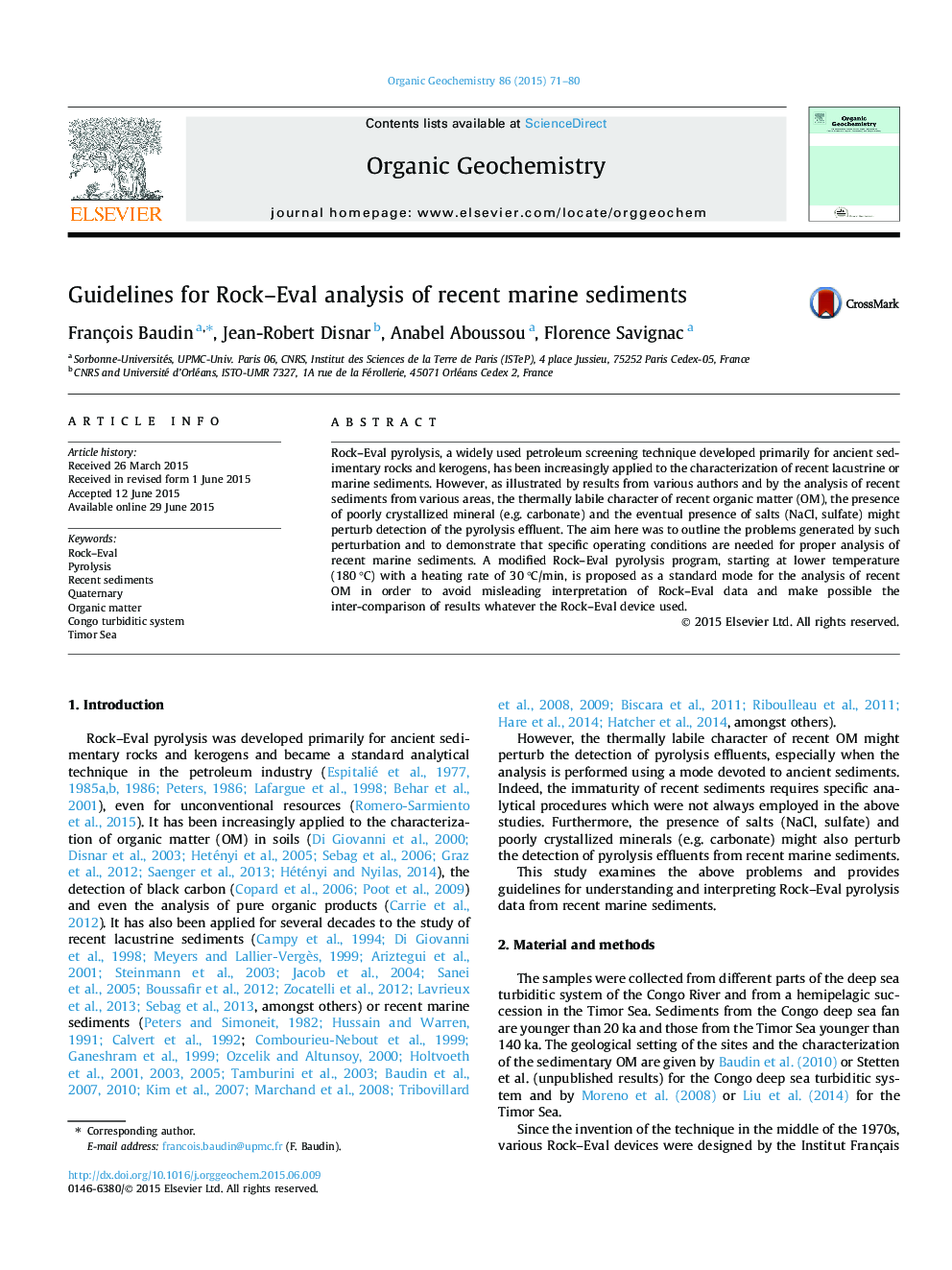| Article ID | Journal | Published Year | Pages | File Type |
|---|---|---|---|---|
| 5162225 | Organic Geochemistry | 2015 | 10 Pages |
Abstract
Rock-Eval pyrolysis, a widely used petroleum screening technique developed primarily for ancient sedimentary rocks and kerogens, has been increasingly applied to the characterization of recent lacustrine or marine sediments. However, as illustrated by results from various authors and by the analysis of recent sediments from various areas, the thermally labile character of recent organic matter (OM), the presence of poorly crystallized mineral (e.g. carbonate) and the eventual presence of salts (NaCl, sulfate) might perturb detection of the pyrolysis effluent. The aim here was to outline the problems generated by such perturbation and to demonstrate that specific operating conditions are needed for proper analysis of recent marine sediments. A modified Rock-Eval pyrolysis program, starting at lower temperature (180 °C) with a heating rate of 30 °C/min, is proposed as a standard mode for the analysis of recent OM in order to avoid misleading interpretation of Rock-Eval data and make possible the inter-comparison of results whatever the Rock-Eval device used.
Related Topics
Physical Sciences and Engineering
Chemistry
Organic Chemistry
Authors
François Baudin, Jean-Robert Disnar, Anabel Aboussou, Florence Savignac,
